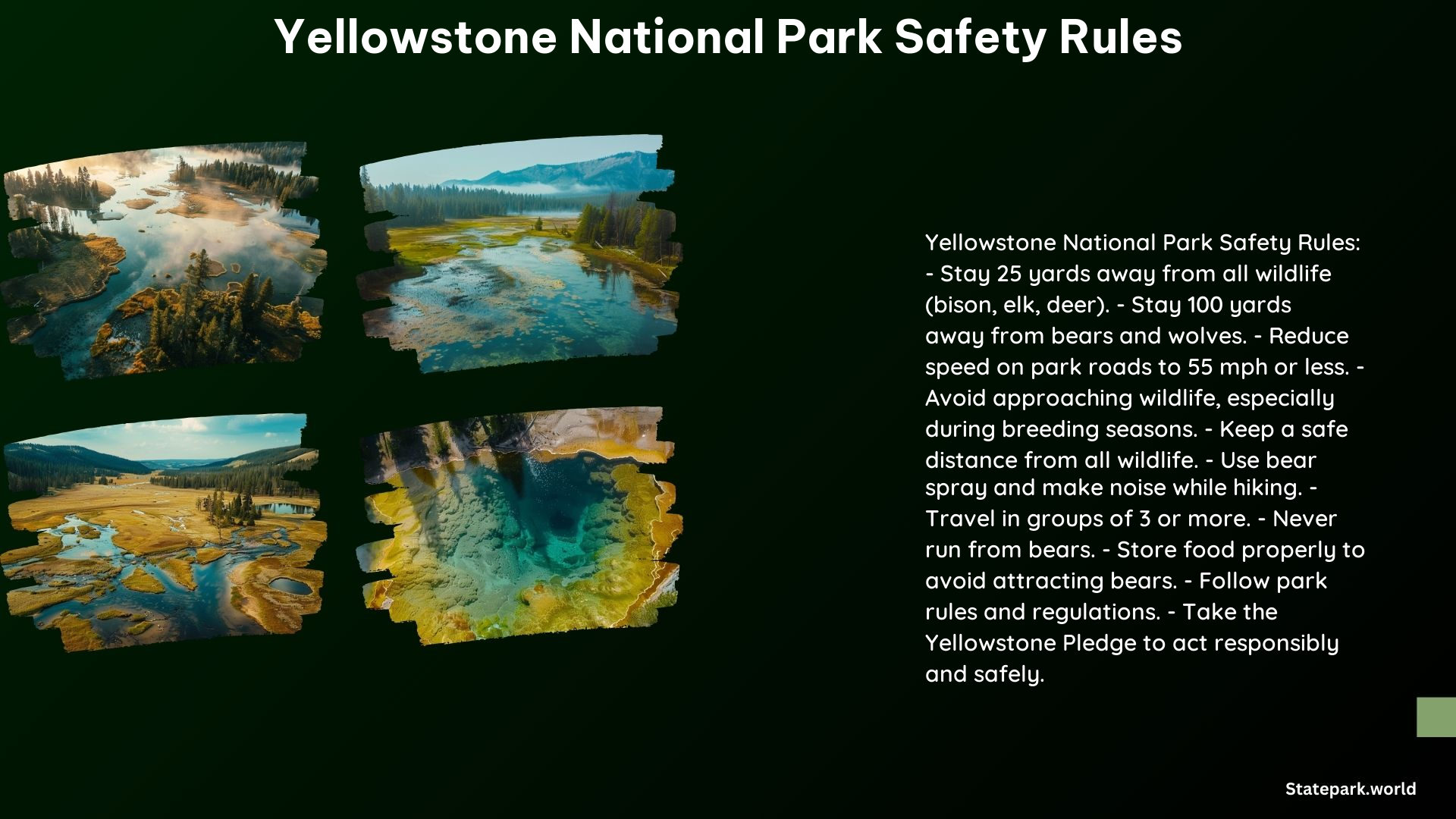Yellowstone National Park is a breathtaking natural wonder, but it’s crucial to follow safety rules to protect both visitors and the park’s incredible wildlife. This comprehensive guide covers the required distances to maintain from wildlife, the consequences of not following safety rules, and additional tips to ensure a safe and enjoyable experience in Yellowstone.
Required Distance from Wildlife
Maintaining a safe distance from the animals in Yellowstone is essential for your safety and the well-being of the wildlife. Here are the recommended distances to keep:
| Animal | Required Distance |
|---|---|
| Bears and Wolves | 100 yards (91 meters) |
| Other Wildlife (Bison, Elk, Deer) | 25 yards (23 meters) |
Disregarding these regulations can result in fines, injury, or even death for both humans and animals. Approaching wildlife too closely can also negatively impact their well-being and survival.
Consequences of Not Following Safety Rules

Failing to adhere to Yellowstone’s safety rules can have serious consequences:
- Fines: Visitors who disregard the regulations can face hefty fines.
- Injury or Death: Getting too close to wildlife can lead to attacks, resulting in severe injuries or even fatalities.
- Animal Disturbance: Interfering with the animals can disrupt their natural behaviors and have a detrimental effect on their overall well-being and survival.
Recent incidents in Yellowstone highlight the importance of following the safety rules. In one case, two black bears and an elk were struck and killed by vehicles on U.S. Highway 191. There have also been instances of visitors getting too close to bison, leading to goring incidents. Additionally, a visitor placed an elk calf in their car, which later ran off into the forest, an incident that is currently under investigation.
Additional Safety Tips
To ensure a safe and enjoyable experience in Yellowstone, follow these additional tips:
- Stay on Boardwalks and Trails: Remain on designated boardwalks and trails to avoid disturbing wildlife and to ensure your own safety.
- Reduce Speed on Park Roads: Travel at 55 mph or less on U.S. Highway 191 and 45 mph or less on other park roads, especially at night when animal fur can make them difficult to see.
- Take the Yellowstone Pledge: Act responsibly and safely, and set a good example for others. If you witness dangerous behavior, report it to a ranger.
Tours and Guides
For those who want a more guided experience in Yellowstone, there are several tour options available:
- Private Yellowstone Wildlife Tour: A guided tour focusing on wildlife viewing, including bears, wolves, elk, and more. ($750 per day)
- Yellowstone In A Day Tour: A comprehensive tour covering various highlights of the park, including geology, sightseeing, and wildlife watching. ($750 per day)
- Yellowstone Geyser and Geology Tour: A tour exploring the park’s unique geological features, including geysers, mud pots, and hot springs. ($750 per day)
By following the safety rules and guidelines outlined in this article, you can ensure a safe and unforgettable experience in Yellowstone National Park. Remember, your actions not only protect yourself but also the park’s incredible wildlife and natural resources.
References
- National Park Service. (2023). Yellowstone National Park Calls on Visitors to Protect Wildlife and Themselves. Retrieved from https://www.nps.gov/yell/learn/news/23018.htm
- Yellowstone Guidelines. (n.d.). Bear and Animal Safety in Yellowstone. Retrieved from https://www.yellowstoneguidelines.com/the-area/bear-and-animal-safety.html
- National Park Service. (2019). Regulations – Yellowstone National Park. Retrieved from https://www.nps.gov/yell/planyourvisit/rules.htm
- National Park Service. (2024). Safety – Yellowstone National Park. Retrieved from https://www.nps.gov/yell/planyourvisit/safety.htm
- Yellowstone National Park Lodges. (2018). What NOT to do in Yellowstone. Retrieved from https://www.yellowstonenationalparklodges.com/connect/yellowstone-hot-spot/what-not-to-do-in-yellowstone/.
